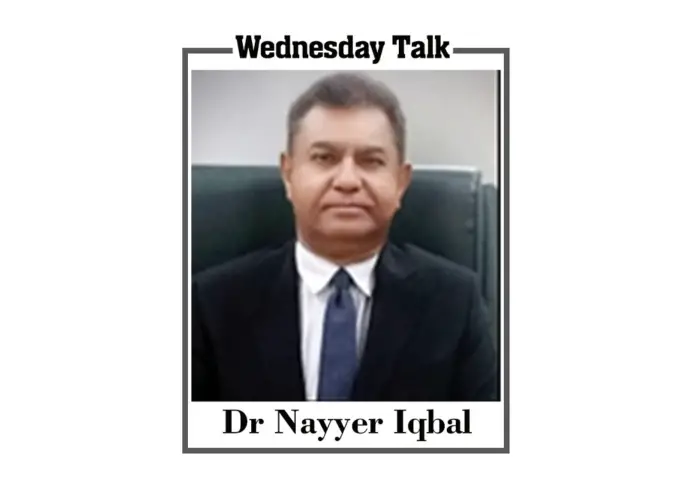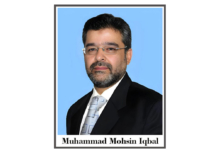Parallel to his anti-corruption drive and efforts to rejuvenate declining Chinese economy Xi Jinping embarked-upon his plan to transform China into a ‘global super-power’ and the world’s ‘pre-eminent nation’. Xi’s vision, generally projected as ‘Chinese Dream’ included Beijing’s claim to international leadership. In the beginning, the American analysts believed that following its ‘conventional wisdom’. China would seek an expanded regional role but would defer to the distant future any global ambitions’. However, in due course, Xi’s policies left no ambiguity that ‘he was gearing-up to contest America’s global leadership’. The initial manifestations of Xi’s objective were multiple. The ‘Belt and Road Initiative’ (BRI), earlier named as ‘One Belt One Road’ (OBOR), a multi-billion dollar, enterprising and co-ordinated infrastructure project led by Beijing, connecting China through land and sea with Europe, Africa, the Middle East, and South, Central and South-east Asia, was the most important, in this connection. The development of ‘artificial islands’ in the controversial Spartly islands in the South-China Sea and their conversion into military bases, was another practical measure in the same direction. The opening of China’s first over-seas naval base in Djibouti, in the Horn of Africa, further highlighted the scheme of expansion. The aggressive foreign and economic policies further aggravated the apprehensions of the American block.
Since assumption of office, President Xi Jinping has concentrated on the People’s Liberation Army (PLA) with the aim to convert it into an ultra-modern fighting force. He intended to close gap with the US militarily at a fast pace and made China capable of confronting any power in case of open war. Xi’s ‘military-civil fusion’ policy that sought to harness new technologies from the private sector also yielded results in weapon-development, nuclear-engineering, aero-space technology and rocket-sciences. He particularly elevated the CCP members with technical education to higher positions and at present more than 1/3 members of the Communist Party’s 205-member Central Committee have a back-ground in science, technology, engineering and mathematics. No wander, if the pace and breadth of military technology breakthroughs have caused concerns in Washington and the European capitals. Xi’s naval expansion program has been particularly mind-blowing which put more vessels to sea between 2014 and 2018 than the total number of ships in the German, Indian, Spanish and British navies combined. Then, there is a continuous endeavor to be in control of crucial waterways of China’s coast as well as to develop a series of bases and logistical facilities farther afield. Xi has also expanded China’s nuclear power abnormally in order to ‘establish a strong system of a strategic deterrence’. The ‘Federation of American Scientists’ (FAS) has worked-out that China possess around 410 nuclear arsenals and the US Department of Defense has fore-warned that China’s depository could touch the figure of 1,000 by 2030. Xi also re-structured the command and control system of the PLA in2015, to clean-up ‘malfeasance and complacency’ in the military’s rank and file. He abolished the four military headquarters —-staff, politics, logistics and armaments—–and replaced them with fifteen smaller agencies. He himself assumed the charge of the Commander-in-chief to ensure ‘total control’ over armed forces and stressed upon ‘loyalty’. As per San Diego, a University of California expert on Chinese military, Xi ‘has been able to take control of the military to an extent that exceeds what Mao and Deng had done’. Xi also stressed upon tight control of CCP on the military and repeatedly warned that ‘the de-politicization of the PLA would lead to a collapse similar to that of the Soviet Union’. To achieve the desired level of strength Xi has invested heavily on the armed forces and during his presidency the defense budget has been more than doubled reaching to a record $224billion in 2023. Xi, being confident of his military might, has stated more than once that China under him has challenged the ‘unilateralism, protectionism and bullying’ around the globe; and ‘has rejected hegemonic power structures in global governance’.
Most probably, Xi has planned to ‘focus on building regional primacy as a springboard to global power’ than ‘outflanking the US alliance system and force presence in that region by developing China’s economic, diplomatic, and political influence on a global scale’. The prospects of adopting the first policy is due to the fact that China cannot be a true global power if it remains surrounded by the US allies and security partners, military bases, and other out-posts of a hostile power’. The analysis gains more weight when it is noticed that Xi has ‘invested heavily in advanced air-defenses, quite sub-marines, anti-ship missiles, and other anti-access/area-denial capabilities necessary to keep US ships and planes away from it shores so that it can have a freer hand in dealing with its neighbors’. According to Western observers, Xi intends to turn the South China Sea and East China Sea into ‘Chinese Lakes’. Xi’s military policies have pushed the US, Japan, Australia and India to form a strategic group called the ‘Quadrilateral Security Dialogue’ mostly dubbed as ‘Quad’ in 2007 which lasted for a year only however was re-established in 2017. After getting sure regarding Beijing’s intensions, the US has clearly identified China as its number-one challenge. In June 2022, for the first time ever, the NATO included China in its strategic concept ‘signaling a radical shift in the block’s security out-look’. On the other side, after his re-election for the third term on March 9, Xi vowed to accelerate military and technology development to ‘safeguard China’s dignity and core interests. In addition to his verbal statements, Xi has been preparing his nation for real war as well. Recently, the government enacted fresh military readiness laws and constructed new air-raid shelters in major cities and sensitive parts of the country.
The West under the leadership of America is certainly apprehensive about Xi’s designs; however there have been two other factors which transformed China’s image in these countries; (i) human rights conditions particularly in Tibet, Xinxiang and Hong Kong; and treatment with Uyghur Muslims; and (ii) increased aggression towards Taiwan. On the other hand, Xi government does not miss any opportunity to project China’s influence and market China’s ‘authoritarianism’ as a model political system i.e. their Coovid-19-related policies were propagated throughout the world as ideally successful whereas West’s handling of the pandemic was scorned
(To be continued).







